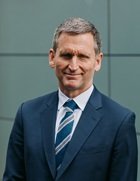
Getty Images/iStockphoto
Automation and interoperability key to UK’s digital energy plans
Energy Digitalisation Taskforce recommends that policy-makers and regulators drive open standards across the energy sector
The UK’s Energy Digitalisation Taskforce has recommended that the energy sector work in a coordinated way to deliver interoperability and make use of automation and device-to-device communications to improve efficiency.
The taskforce, a collaboration between the Department for Business, Energy and Industrial Strategy (BEIS), Ofgem and Innovate UK, aims to drive digitisation as a core component of transformation in the energy sector.
Among the key recommendations outlined in a new report from the taskforce is the need for the energy sector to deliver interoperability through the development and deployment of key public interest digital assets, including a digital spine.
By building a data-sharing fabric and adopting common data standards, the energy sector would be in a position to break down silos, said the taskforce. This paves the way towards building an energy data catalogue and, ultimately, a digital spine that operates across the energy sector.
The taskforce recommended that the energy sector develop and deploy a very thin digital spine across the energy system that enables a minimal layer of operation-critical data to be ingested, standardised and shared in near real time. The digital spine would create a virtual nervous system that would help those responsible for operating the energy system at various levels to take actions to ensure the system is stable and resilient, said the taskforce.
The report’s authors said the development and deployment of limited, common digital assets has the potential to create a radically different energy system, driven by open source software and open standards.
The taskforce recommended that the digital spine should be developed as a totally independent project, with no commercial interests, to ensure it is built in the interest of customers and stakeholders across the system, rather than a specific organisation or operational paradigm.
“We believe the solution should be open source to enable decentralised ownership, development and maintenance of the software by all interested stakeholders,” wrote the report’s authors. “This will further enable companies to easily integrate the digital spine into their own products and services, which creates additional value for customers.”
The taskforce urged the government to define the scope and governance of public interest digital assets. It said this needs to happen quickly because the current approach is not very well coordinated, with different organisations independently leading on distinct assets with lock-in.
Read more about data sharing
- Much of the hype around the internet of things focuses on smart devices, but the best IoT initiatives will be those led by business need and data.
- Analytics strategies should include overarching organisational best practices blended with teams empowered to build interoperable data assets, according to one industry expert.
The report also set out a “prices to devices strategy”, looking at how data can be used to manage energy usage and production. The authors wrote: “We imagine a future energy system with many distributed energy assets that can seamlessly communicate and coordinate to deliver a stable, balanced energy system with minimal human intervention. Devices spanning the entire energy system, from offshore wind farms to flexible assets in domestic homes, can describe their needs and capabilities, securely communicate these across the system and create commercial agreements that enable value to flow.”
The report outlined the development of an energy network where connected devices describe their needs. The network would enable these devices to deliver the outcomes they require in terms of energy, while minimising carbon and costs.
The taskforce said devices need to understand their location in the energy system and must be able to coordinate with networks and system operators to work within system constraints, minimising the need for external intervention. It recommended that financial reconciliation for interactions is clear and auditable and that many of the functions that exist today are automated using energy system data, with both money and carbon flows integrated into the service offering.
The taskforce recommended the government to mandate that all significant energy assets with consumption of 2kWh or more to provide a minimum level of control hardware and IP connectivity. This connectivity would offer the potential for these devices to be used to manage the energy system in the future without needing costly retrofit of digital functionality.
The taskforce called on the government and energy regulator to create policy, regulation and digital infrastructure that enables industry to develop a simple customer consent dashboard to streamline asset registration and mandate smart enabled energy assets.
In terms of regulation, the taskforce recommended that the government align digital regulations and adopt a “digital and systems thinking approach”. This would enable policy-makers and regulators to identify, acknowledge and manage sector interdependencies through policy and regulation across infrastructure sectors.










